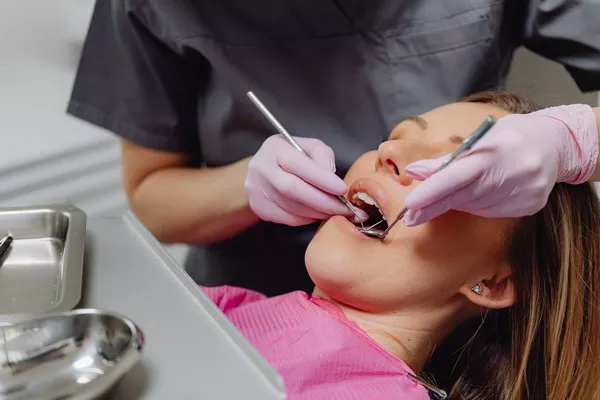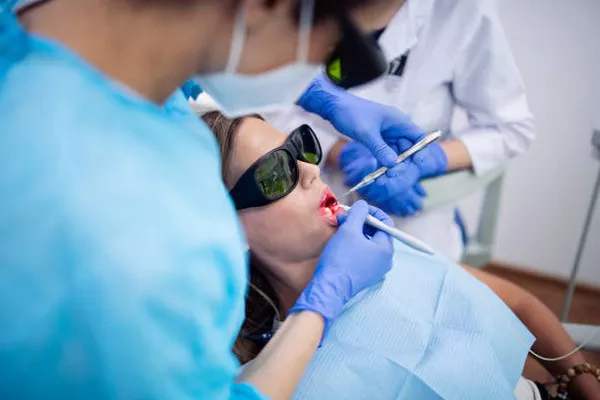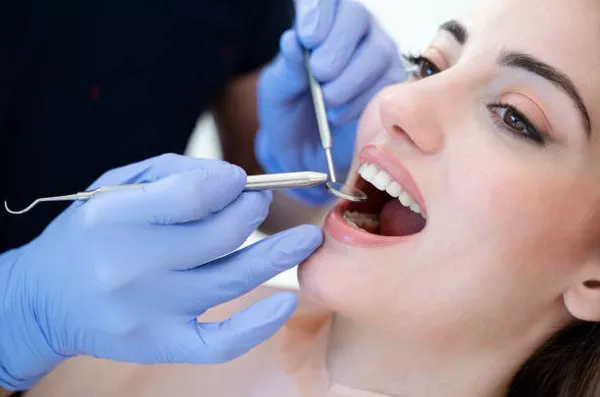Gingivitis, the early stage of gum disease, can be effectively prevented with proper oral care at home. Understanding the importance of good dental hygiene practices is key to maintaining healthy gums and preventing more serious conditions like periodontitis. Here’s a comprehensive guide to help you prevent gingivitis and keep your smile healthy.
Understanding Gingivitis
Gingivitis is an inflammation of the gums caused primarily by plaque buildup on the teeth. Plaque is a sticky film of bacteria that forms when food particles mix with saliva. If not removed through regular brushing and flossing, plaque can harden into tartar, which can only be removed by a dental professional. Gingivitis is reversible with good oral hygiene practices.
Symptoms of Gingivitis
Recognizing the symptoms of gingivitis early can help you take action before it progresses. Common symptoms include:
- Red or swollen gums
- Tender or bleeding gums, especially when brushing or flossing
- Bad breath
- Receding gums
Key Points for Preventing Gingivitis at Home
To effectively prevent gingivitis, focus on the following key points:
Maintain Proper Oral Hygiene
- Brush Your Teeth Twice Daily: Use a soft-bristled toothbrush and fluoride toothpaste. Brush for at least two minutes, covering all surfaces of your teeth.
- Floss Daily: Flossing removes food particles and plaque from between the teeth and under the gumline where a toothbrush can’t reach.
- Use Mouthwash: Antimicrobial or antiseptic mouthwash can help reduce plaque and bacteria that cause gingivitis.
Regular Dental Visits
Even with excellent oral hygiene at home, regular dental check-ups are essential. Professional cleanings remove tartar buildup and allow your dentist to catch early signs of gum disease.
Healthy Diet
A balanced diet low in sugar and high in vitamins and minerals supports overall health, including gum health. Foods rich in vitamin C and calcium are particularly beneficial for your gums.
Avoid Tobacco
Smoking and using other forms of tobacco increase the risk of gum disease. Quitting tobacco use can significantly improve oral health.
Stay Hydrated
Drinking plenty of water helps wash away food particles and bacteria, reducing plaque formation. Saliva production, which is crucial for maintaining oral health, is also stimulated by adequate hydration.
see also: How fast does gingivitis spread?
How to Stop Periodontal Disease
Understanding Periodontitis
Periodontitis is a severe form of gum disease caused by bacterial infection. It starts with gingivitis, the inflammation of the gums, and if left untreated, it progresses to periodontitis, where the infection spreads below the gumline, damaging the soft tissue and bone that support the teeth. This can lead to tooth mobility and loss.
Symptoms of Periodontitis
Identifying periodontitis early can prevent further complications. Look for these symptoms:
- Reddish or purplish gums
- Swollen gums
- Gums that bleed easily
- Tender gums
- Bad breath
- Pus around the gum line
- Loose teeth
- Tooth loss
- Gum recession
- Pain when chewing
- New gaps or spaces between teeth
- Changes in the way teeth fit together
Risk Factors
Several factors can increase the risk of developing periodontitis:
- Poor Oral Hygiene: Inadequate brushing and flossing allow plaque to build up.
- Genetics and Family History: Some people are genetically predisposed to gum disease.
- Smoking: Tobacco use weakens the immune system and impairs healing.
- Diabetes: Poorly controlled diabetes can increase the risk of infections, including gum disease.
- Hormonal Changes: Pregnancy, menstruation, and birth control pills can make gums more sensitive and susceptible to inflammation.
Preventive Measures
Prevention is crucial in managing and stopping periodontal disease. Here’s how:
- Regular Dental Cleanings: Professional cleanings remove tartar that cannot be eliminated by brushing and flossing alone.
- Daily Oral Hygiene: Brushing, flossing, and using mouthwash daily are vital.
- Know Your Risk Factors: Be aware of your susceptibility to gum disease and take proactive steps.
- See a Periodontist: Specialized care from a periodontist can help manage and treat periodontitis effectively.
Treatment Options
If you develop periodontitis, various treatments are available:
1.Nonsurgical Treatments:
- Scaling and Root Planing: This deep-cleaning method removes tartar and bacteria from tooth surfaces and below the gumline. Root planning smooths the root surfaces to prevent further buildup.
- Antibiotics: Topical or oral antibiotics can help control bacterial infection.
2. Surgical Treatments (for advanced cases):
- Flap Surgery (Pocket Reduction Surgery): Involves cutting the gums to expose tooth roots for effective cleaning and smoothing.
- Soft Tissue Grafts: Reinforcing damaged gum tissue to address gum recession and provide additional support.
Lifestyle Changes
Incorporating certain lifestyle changes can significantly impact the health of your gums:
- Maintain Good Oral Hygiene Practices: Consistent and thorough brushing, flossing, and use of mouthwash.
- Manage Health Conditions: Proper management of diabetes and other health conditions that impact dental health.
- Quit Tobacco Use: Eliminating smoking or other tobacco use enhances your body’s ability to fight infections and promotes healing.
see also: What medicine to take for gingivitis?
Conclusion
Preventing gingivitis and stopping periodontal disease require a commitment to good oral hygiene practices, regular dental visits, a healthy diet, and lifestyle changes. By understanding the causes, symptoms, and treatment options for these conditions, you can take proactive steps to maintain your oral health and prevent serious complications. Remember, your oral health is an integral part of your overall well-being. Take care of your gums and teeth, and they will take care of you.
FAQs about Periodontal Disease
1. Can You Recover from Periodontitis?
Recovery from periodontitis, or advanced gum disease, is possible but requires diligent and ongoing care. While the damage caused by periodontitis can be managed and controlled, it may not be completely reversible. Treatment focuses on eliminating infection, halting the progression of the disease, and maintaining oral health to prevent further damage. Regular dental visits, professional cleanings, and a strict oral hygiene regimen at home are essential components of managing periodontitis effectively.
2. How to Repair Periodontal Disease?
Repairing periodontal disease involves several steps, which may include:
- Professional Cleaning: Deep cleaning procedures such as scaling and root planing are performed to remove plaque and tartar from below the gum line.
- Medications: Antibiotics or antimicrobial mouth rinses may be prescribed to control infection and inflammation.
- Surgical Treatments: In more advanced cases, surgical procedures such as flap surgery, bone grafts, or tissue regeneration may be necessary to restore damaged tissues and bone.
- Improved Oral Hygiene: Brushing at least twice a day, flossing daily, and using an antiseptic mouthwash can help control plaque buildup and maintain gum health.
- Lifestyle Changes: Quitting smoking and managing underlying health conditions such as diabetes can significantly improve the outcome of periodontal treatment.
3. Can I Live a Long Life with Periodontal Disease?
Yes, it is possible to live a long life with periodontal disease, especially if it is managed properly. Regular dental care and good oral hygiene can help control the progression of the disease and prevent severe complications. However, untreated periodontal disease can lead to tooth loss and has been linked to other systemic health issues, such as cardiovascular disease and diabetes. Therefore, it is crucial to address periodontal disease promptly and maintain consistent care to ensure overall health and well-being.
4. Is Periodontal Disease Serious?
Yes, periodontal disease is a serious condition that requires prompt and effective treatment. If left untreated, it can lead to significant oral health problems, including:
- Gum Recession: The gums may pull away from the teeth, creating pockets that harbor bacteria and further infection.
- Bone Loss: The supporting bone structure around the teeth can deteriorate, leading to tooth mobility and eventual tooth loss.
- Tooth Loss: Advanced periodontal disease is a leading cause of tooth loss in adults.
Systemic Health Issues: Research has linked periodontal disease to various systemic conditions, including heart disease, stroke, diabetes, and respiratory infections.
You Might Be Interested In































